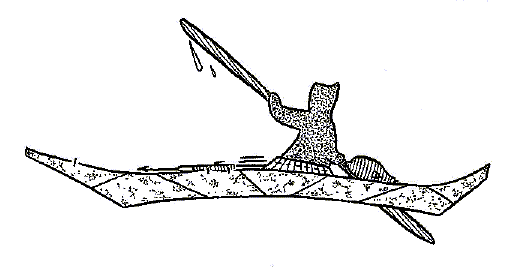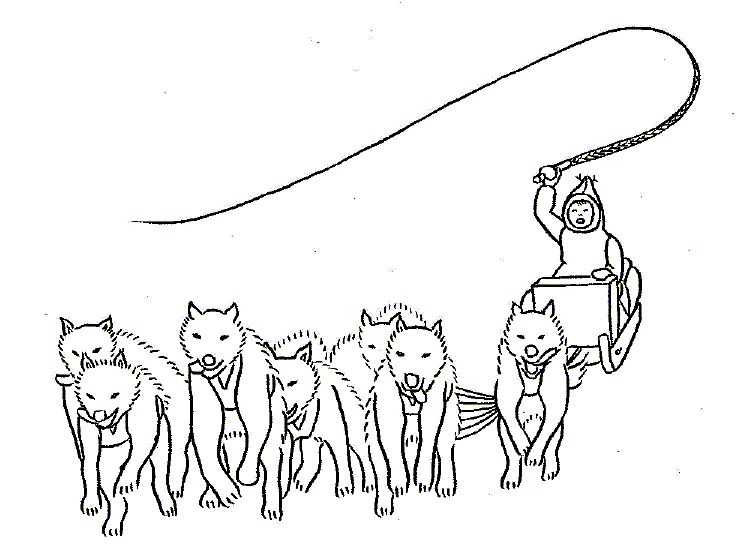Inuit Children's Leisure Time Activities - Fact Sheet
Archived Content
Information identified as archived is provided for reference, research or recordkeeping purposes. It is not subject to the Government of Canada Web Standards and has not been altered or updated since it was archived. Please "contact us" to request a format other than those available.
Sports participation
Participation in art and music activities
Clubs or groups (e.g., youth groups, drum groups, dance groups)
Cultural activities and time spent with elders
Sedentary activities
About this report
Artist Information
Sports participation
Although sports are only one type of physical activity, Health Canada's Physical Activity Guide for Children and Youth recommends that children participate in 90 minutes of moderate to vigorous daily physical activity.
- Almost three quarters (73%) of all Inuit children participated in sports outside of school at least once per week and approximately one third (37%) participated four or more days per week.
- Inuit children are more likely to participate in sport at least once per week (73%) than all children in Canada1 (64%).
- Inuit children living in Nunavik are less likely to participate in sport at least once per week (67%) than those living Nunavut (73%). The percentage of Inuit children living in Labrador and the Inuvialuit region who participated in sport is similar to the level for Inuit children in Nunavik and Nunavut.

Chart 1
Inuit children were more likely to participate in sport at least once per week than children in all of Canada, 2001
Participation in art and music activities
In general, children who participate in extracurricular activities are less likely to have emotional or behavioural disorders, incidences of repeating a grade, or problems with peer relationships.
- Inuit children participated in similar rates of art and / or music at least once per week (22%) as compared to children in all of Canada (23%).
- Children living in the Nunavik region were less likely to participate at least once per week or more (16%) than were children in Labrador (25%) or the Inuvialuit region (22%).
Clubs or groups (e.g., youth groups, drum groups, dance groups)
Like art and music participation, children who take part in clubs or community groups have been shown in the general population to get along better with their peers.
- Inuit children were slightly less likely to participate in clubs or groups at least once per week (20%) than were Canadian children in general (23%). It should be noted, however, that the availability of such activities in the Inuit regions is likely more limited than in other parts of the country.
- Children living in Nunavik were less likely to participate in clubs or groups at least once per week (13%) than children in all other regions. Children living in Labrador were also more likely to participate in clubs or groups at least once per week (30%) than were children in Nunavut (18%).
Chart 2
Inuit children slightly less likely to participate in clubs or groups at least once per week, 2001

Cultural activities and time spent with elders
Extended kinship and cultural activities play an important role in Inuit communities.
- Approximately 17% of Inuit children participated in cultural activities at least once per week, and half (50%) were found to spend time with elders at least once per week.
- Children in Labrador (11%) and Nunavik (12%) were less likely to participate in cultural activities once per week or more than were children living in Nunavut (21%) or the Inuvialuit region (28%). Similarly, fewer children living in Nunavik were found to spend time with their elders at least once per week or more (47%) than did children in Nunavut (57%) or the Inuvialuit region (59%). Children living in Labrador were equally likely to spend time with elders as compared to all other regions.
Sedentary activities
Both obesity and type 2 diabetes are of increasing concern in Inuit communities. Increased sedentary behaviours may contribute to these conditions.
- In 2001, 45% of Inuit children were reported to watch three or more hours of television per day, and 24% played two or more hours of video games. Children living in Nunavik (22%) and Nunavut (25%) were less likely than children living in the Labrador (36%) and Inuvialuit (36%) regions to play two or more hours of videogames per day.
About this report
This Inuit fact sheet is one in a series based on data from the 2001 Aboriginal Peoples Survey (APS). This report is a joint publication between The Social and Aboriginal Statistics Division and The Health Information and Research Division at Statistics Canada, as well as the Inuit Tapiriit Kanatami. For more information, see the report entitled: Inuit Children's Leisure Time Activities: A Report Using the 2001 Aboriginal Peoples Survey (Children and Youth Component).
Unless otherwise stated, data are for children aged 4 to14. Information for Inuit children was gathered from the "person most knowledgeable" (PMK) about the child. In most cases the PMK was the birth parent (mother or father), but it could also have been a grandparent, an aunt or an uncle.
For this report, Inuit children were those who had Inuit identity along with those who had Inuit identity combined with North American Indian or Métis.
In 2001, approximately four out of five Inuit children in Canada lived in one of four regions within Inuit Nunaat, the Inuktitut expression for "Inuit homeland". Inuit Nunaat is comprised of: 1) the northern coastal region of Labrador, 2) Nunavik in northern Quebec; 3) the territory of Nunavut; 4) the Inuvialuit region in the Northwest Territories.
For this fact sheet, "Labrador" consists of Rigolet, Happy Valley-Goose Bay, Makkovik, Nain and Postville. (This makes it different from the Nunatsiavut region, which excludes Happy Valley-Goose Bay and includes Hopedale). The Inuvialuit region consists of the following communities: Inuvik, Aklavik, Sachs Harbour, Paulatuk, Ulukhaktok (Holman) and Tuktoyaktuk.
Information about the Artist
Alootook Ipellie was born in a hunting camp on the north coast of Frobisher Bay in the Northwest Territories. He grew up in Iqaluit (formerly Frobisher Bay), and had a multifaceted career in the fine arts. As a graphic artist, cartoonist, photographer and writer, he contributed to many Inuit publications in the Canadian Arctic until his passing in September 2007.
You need to use the free Adobe Reader to view PDF documents. To view (open) these files, simply click on the link. To download (save) them, right-click on the link. Note that if you are using Internet Explorer or AOL, PDF documents sometimes do not open properly. See Troubleshooting PDFs. PDF documents may not be accessible by some devices. For more information, visit the Adobe website or contact us for assistance.
- Date modified:
